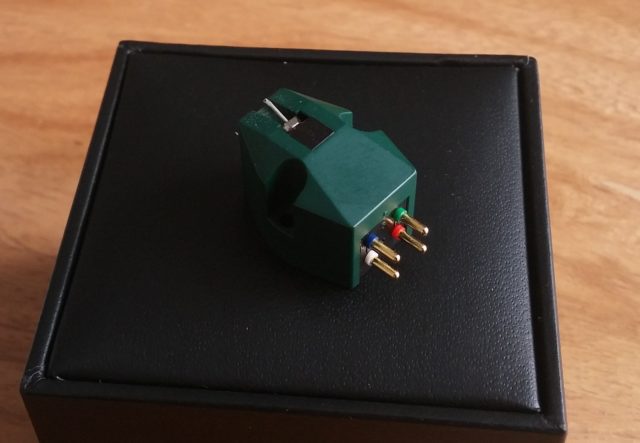 Many have long regarded Denon’s DL103 as the benchmark in “budget moving coil” cartridges. In production more or less constantly since the early 1960’s, it has occupied a spot in thousands of analog enthusiasts’ hearts (and headshells). For many, it was as close to a perfect transducer as we could ask for under $1000. At $200-250, it was a fantastic overachiever, let down only by a slight reticence, or politeness – in fact the 103’s sound was so balanced that some concluded it was like a Honda motorcycle: so composed and dependable, it might just be a tad on the dull side. It’s often been described as smooth; rarely is it called exciting.
Many have long regarded Denon’s DL103 as the benchmark in “budget moving coil” cartridges. In production more or less constantly since the early 1960’s, it has occupied a spot in thousands of analog enthusiasts’ hearts (and headshells). For many, it was as close to a perfect transducer as we could ask for under $1000. At $200-250, it was a fantastic overachiever, let down only by a slight reticence, or politeness – in fact the 103’s sound was so balanced that some concluded it was like a Honda motorcycle: so composed and dependable, it might just be a tad on the dull side. It’s often been described as smooth; rarely is it called exciting.
Competitors haven’t had much success dethroning the venerable DL, though. Shure tried, but always stuck with MM designs. Sumiko tried, with the Blue Point. Dynavector’s 10×4 (later 10×5) was a worthy attempt. Ortofon later took the low road with its’ 2M series of MM’s – trying to beat Denon on price. Even Denon’s own DL110 has from time to time been pumped as the bargain champ – probably when supplies of DL103’s were low. None could ultimately match the 103’s combination of price point, its deft touch with music and rock solid reliability. In fact, cottage industries were born to take the 103 and improve on it – from retipping to denuding to aftermarket aluminum and wood bodies – and why not? While other $200 cartridges reached their end of life matter-of-factly, every DL103 was deemed worthy of rescue and repurposing in an audiophile context.
But enough preamble. We’re here to discuss the Hana cartridge. And I’ll come out and say this right now, my feeling is that the Hana is the new king of sub-$1k moving-coils.
Notice I said “the Hana cartridge”. There are actually four models in the lineup. But: they’re very similar in terms of both price and performance. These are the models (US prices in 2017):
Hana EH (Elliptical High Output) $475
Hana EL (Elliptical Low Output) $475
Hana SH (Shibata High Output) $750
Hana SL (Shibata Low Output) $750
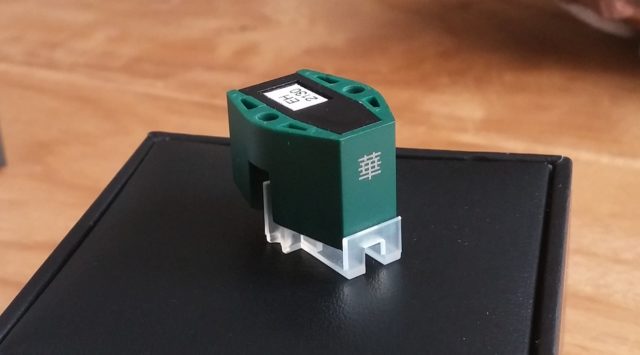 Excel Sound Corporation (Japan) is a renowned OEM of some very fine, high-end phono cartridges. The Hana is a collaboration between Excel and Mr. Hiroshi Ishihara of Sibatech, who market some of Japan’s best audio gear to export markets. Under its unassuming ‘moss green’ resin body lives a motor assembly designed around Alnico magnets. Yes, Alnico – the real deal, the holy grail of audio transducers. Other details of the background and development have been difficult to obtain. The Japanese are notoriously tight lipped, as we know. One thing to note is that the cartridge is quite light, at 5 grams. If your counterweight is on the heavy side, you may need additional ballast at the headshell end (or preferably, a smaller counterweight). For me this posed no issue on any of the arms I’ve used. On the plus side, having your counterweight up closer to the arm’s pivot point is a good thing in terms of rigidity.
Excel Sound Corporation (Japan) is a renowned OEM of some very fine, high-end phono cartridges. The Hana is a collaboration between Excel and Mr. Hiroshi Ishihara of Sibatech, who market some of Japan’s best audio gear to export markets. Under its unassuming ‘moss green’ resin body lives a motor assembly designed around Alnico magnets. Yes, Alnico – the real deal, the holy grail of audio transducers. Other details of the background and development have been difficult to obtain. The Japanese are notoriously tight lipped, as we know. One thing to note is that the cartridge is quite light, at 5 grams. If your counterweight is on the heavy side, you may need additional ballast at the headshell end (or preferably, a smaller counterweight). For me this posed no issue on any of the arms I’ve used. On the plus side, having your counterweight up closer to the arm’s pivot point is a good thing in terms of rigidity.
I’ve lived with the EH for about 10 months now, I was in love with it from day one, and I’m still in love with it. I’ve used it with three decks: the Teres (Jelco SA750 arm), the obscure Perpetual TT-2 (RB303 arm), and now the Pro-ject RPM3, with its mid-level 10.5″ carbon fiber arm, which I quite like. (yeah, I’ve been downsizing) Across platforms, the Hana’s character has been completely consistent: it’s one of those “equalizers”. It’s a player that opens up the midrange soul of your music. I wish I had better words to convey what that means to me. It’s literally, everything. It’s like the first time you hear a good 300B, after a lifetime diet of transistors.
But that doesn’t even do it justice.
Why? Audiophile “experiences” tend to be analytical. Even ‘audio revelations’ are referential – you think about what came before, what’s being wiped away while your hard drive is being rewritten. Well, of course we’re all wired to do that. But there’s really nothing analytical about the sound of the Hana cartridge. What it does is simply connect you to the music on your vinyl recordings.
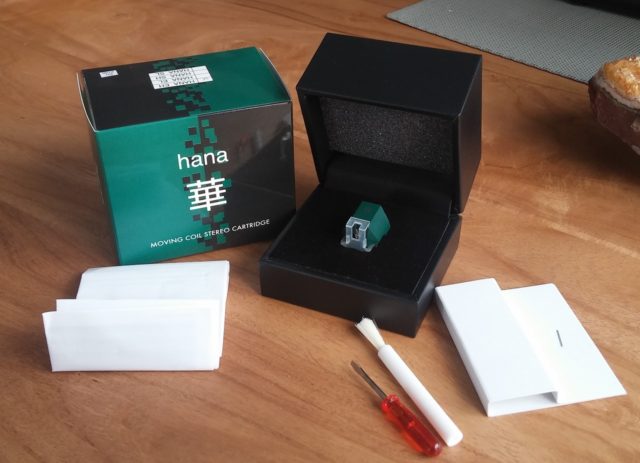 Really. I’d like to spill words in the standard audio review way, but the Hana doesn’t lend itself to the usual descriptors. It feels false and unjust to draw comparisons with the typical analogies and name-dropping. Kind of like discovering an artist you love, and then reading some critic’s rant on how they’re like the love child of Tom Waits and John Lennon, or some such drivel (usually intended to make the reviewer sound smart). How does it make you feel? Are you smiling? Dancing? These are more like the parameters that seem to revolve around the Hana EH, when I think about valid ways to discuss it.
Really. I’d like to spill words in the standard audio review way, but the Hana doesn’t lend itself to the usual descriptors. It feels false and unjust to draw comparisons with the typical analogies and name-dropping. Kind of like discovering an artist you love, and then reading some critic’s rant on how they’re like the love child of Tom Waits and John Lennon, or some such drivel (usually intended to make the reviewer sound smart). How does it make you feel? Are you smiling? Dancing? These are more like the parameters that seem to revolve around the Hana EH, when I think about valid ways to discuss it.
I know, you need some examples. Well, I’ve been especially pleased with how the Hana handles vocals. Piano, string, and vocal tone are the de rigeur tests in audio playback, but vocals are usually my make or break. If something fails to move me, I know it right away listening to my favourite singers. With the Hana, Otis Redding’s The Dock Of The Bay (mono reissue by Rhino) roars across a half century with tremendous clarity – not just free from sonic distortion, but clarity – and depth – in the emotions that the artist conveys when he sings. Bruce Springsteen’s Nebraska has never sounded so good, to me. His 1980 headspace is laid bare in this album, one of his most intimate and raw. Bruce Cockburn’s 1970’s classics are in the room. Bob Dylan and Leonard Cohen are in the room. But no, I mean really – not just their voices, but their thoughts and feelings are “in the room”. This is not about ‘sonics’! Yeah sure, you still need clean, decent pressings to get the very best from analog, blah blah. But the Hana makes you stop worrying about that. It doesn’t even want you to get lost in your record collection; it wants you to get lost in the music.
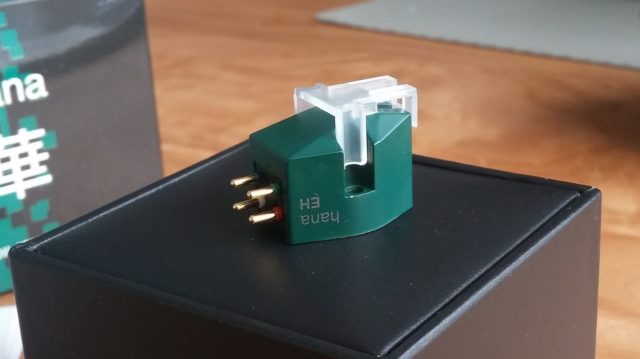 Phillip Holmes of Mockingbird Distribution (whose audio mind I respect), calls the Hana a sort of ‘victory lap’ for Excel. In discussing the differences between the Hana models, he made some interesting points. “The penalties of high versus low output are small in this design (the windings are twice as many on the high output version–which amounts to very little actual mass: 2 x almost nothing=not very much). The differences between elliptical and shibata depend on many factors. The shibata’s advantages are usually on inner grooves, where groove pinch becomes more noticeable. The high output elliptical might outperform the low output Shibata version on some records, in some systems. With my “garage sale” records, sporting crappy surfaces, poor mastering, warps, scratches, and all, the elliptical often sounds better.”
Phillip Holmes of Mockingbird Distribution (whose audio mind I respect), calls the Hana a sort of ‘victory lap’ for Excel. In discussing the differences between the Hana models, he made some interesting points. “The penalties of high versus low output are small in this design (the windings are twice as many on the high output version–which amounts to very little actual mass: 2 x almost nothing=not very much). The differences between elliptical and shibata depend on many factors. The shibata’s advantages are usually on inner grooves, where groove pinch becomes more noticeable. The high output elliptical might outperform the low output Shibata version on some records, in some systems. With my “garage sale” records, sporting crappy surfaces, poor mastering, warps, scratches, and all, the elliptical often sounds better.”
Phillip’s comments are borne out by the Hi-Fi World review, which compares the EH and EL models. Both have measured output that’s considerably healthier than spec (the EH does retain 4x higher output than its low output sister), and their measurements also confirm how close the two are in frequency response and channel balance. The low output version does track measurably better, according to HFW.
A few miscellaneous comments. The Hana EH tracks very well for me, at ~1.9-2.0 grams VTF (2g is the recommended). It doesn’t accentuate surface noise (it certainly doesn’t have a sizzling top end). In fact, its stylus even seems to pick up less schmutz than others I’ve used. Or maybe it just “lets go” of the dust better, when the arm is lifted. Whatever the reason, it seems to need less cleaning attention. The cantilever is nicely visible, without any needless protruding. Very much like a DL103. All told, it acts and feels like a unit that’s built to last, and goes about its business efficiently. It comes in a nice box – not especially fancy, but nice.
Complaints? I have a couple of minor ergonomic quibbles. The stylus guard is fiddly: it’s not the worst I’ve seen, but it needs to be handled with care. Remember the old days when the guard was integrated (mounted) on the body? Or even flourished with a little dust brush, like Shure and Stanton used to do with their better models. Man, those things were dummy proof! I’d give up the 1-2% in rigidity to have that kind of simple protection.
My other gripe is that the the mounting holes aren’t threaded (tapped) for your bolts – you need bolts of the right length, with nuts to secure them. This isn’t a big deal for many folks, but for those of us who need to swap carts often, it’s annoying. Combined with the design of the guard, it also makes mounting that much more precarious- unless you have a removeable headshell. Look at the photo just above and you’ll see what I mean. For those with clumsiness or anxiety issues, just ask a dealer or a friend to do it. If you’re comfortable in general with the task, then you can tell from the photos that this is not a particularly scary unit to handle. Apart from that, ease of use couldn’t be better.
Again, words only serve to fill a page and entice the imagination. Hana’s cartridges need to be experienced. On a limb, I’d say it’s almost like they’ve changed the game by making a product that’s so musical, you want to forget about all the audiophile aspects. The beauty is that these cartridges are priced so well, it really doesn’t entail much risk to try one. While I obviously can’t promise it will satisfy everyone, I think 95% of analog enthusiasts will like it – and a good chunk of them will love it, like I do. And I’d wager even if 5 in 100 didn’t take to the Hana (for whatever reason), they’d still say it’s a good value.
For me, the Hana EH not only redefines the budget MC cartridge: it practically redefines music for the open minded audiophile. Gold Star indeed, and my most enthusiastic recommendation.
Hana EH Moving Coil Phono Cartridge, $475 US Retail
Review Sample provided by Mockingbird Distribution
Disclaimer: the author of this review now also runs a retail audio business – and has been a Hana dealer since 2019.

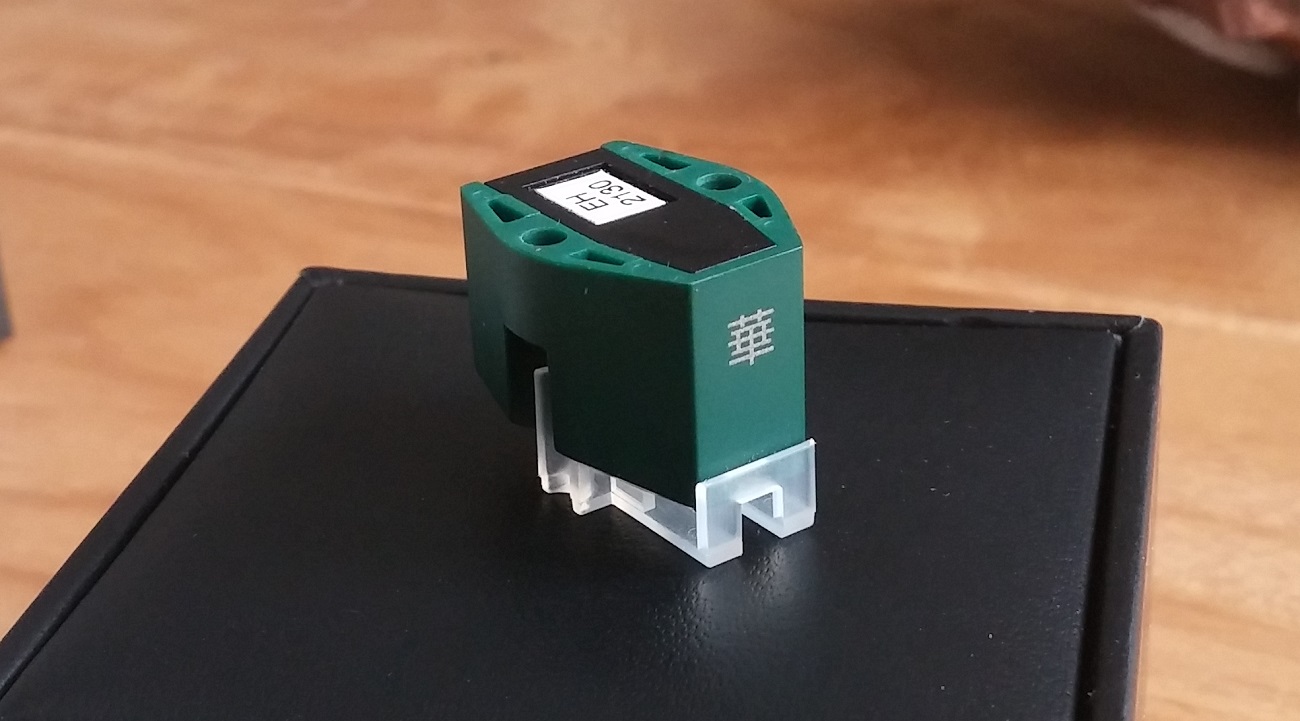
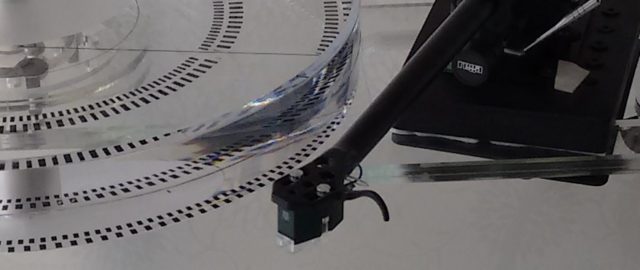
Curious if you’ve had any experience with the Denon DL160 HO that they for some reason decided to discontinue? I always thought it was head and shoulders better than the DL 110.
Not personally. I know Denon’s phono exports really took a hit after the earthquake & tsunami a few years ago. I wasn’t overly impressed with the DL110 either, even when it was cheap. In that price range I liked Nagaoka, Shure, AT and Ortofon carts better. Sumiko has some interesting lower end models too, I haven’t had a chance to sample them.
Regards,
Noam
Do you know if the Hana is a step up from the mm musicmaker 111 cartridge thank you
Hi Charles,
I am not personally familiar with the Music Maker, sorry.
Noam
Hello Noam:
In your experience would the Hana EH elliptical be a substantial upgrade to a Clearaudio Aurum Classics?
Thanks.
Definitely! Most of the ‘Clearaudio’ MM’s are widely regarded to be dressed up lower-end AT carts. This is true of the ones I’ve had. Not that they’re bad, just a little pricey for what they really are. 🙂
Hana is a true MC and a unique design, I think you’ll find it’s in a different league sonically.
Noam
I now own a Hanna el I need a matching step up my Cary ph301 has 60db at 100 ohm loading its to bright
Hi Charles,
At 60dB there should be plenty of gain already for the EL. Getting a better tonal balance could just be a matter of finding the right loading resistors. 200-300 Ohms would be about right. You might also check your setup, if you have lack of bass it can mean you’re tracking without enough downforce. VTA might be off also causing that.
If you do go with a SUT, I’ve had good luck with Altec, Lundahl, and Cinemag. But you may end up with too much gain.
Noam
Greetings; My Benz Micro Glider finally fell apart (after 19 years of use). Is the Hana EH in any way comparable? Thanks
Hi Larry,
Yes, I think it is comparable with the Glider. Very musical with a lucid and vivid midrange as its core strength.
Noam
Nice review, however, on a technical accuracy note, having one’s counterweight positioned close to the bearing doesn’t necessarily provide any rigidity advantage, only a potential improvement WRT moment of inertia. IOW, with statically balanced tonearms, in particular, there should be less upset with record warps, ripples , etc.
I have a Blue Point No#2 with a bent cantilever. I have a Pro Ject Carbon 5.1 table. Considering the Hana HO or the Sumiko Blue Point Special. Why did not Hana thread screw holes easing set up? Leaning toward the Hana. Doe it come with mounting screws and nuts? Thanks
Yes, it comes with hardware.
It is a very light cartridge make sure your tone arm is correct for it otherwise you will need a head shell weight and longer screws …that was my experience all said and done great cartridge ……
Would a Hana EH be a good match for a Technics SL Q2?
Hi Ben,
The SL-Q2 has a medium effective mass (12g) tonearm, if it’s working well it should be a good match with the Hana.
Noam
Would the Hana be a better choice than a vintage NOS Signet TK7E MM cart?
Hi Ben,
I really couldn’t say for sure, but I think it would. Some of the 1970’s MM’s are very capable. But being so old, you have to worry about their rubber suspension bits drying out. Quite common.
Noam
Sorry can’t answer that question,put my tone arm is 11 grams and it was to light , find out the weight of your tone arm if it’s to light you will need a head shell weight and longer screws to mount it. That what I did. Hope this helps
Hi Charles,
I’ve installed Hana cartridges in 8 or 9 different arms and haven’t encountered this issue yet, even though it is a lightweight cartridge. I recently put one on a Pro-ject that specified 6g+ (the Hana is 5g) and the counterweight was still fine.
The 12g on Ben’s Technics is the
effective mass (mEff), put simply that just indicates whether it’s suitable for low, medium or high compliance cartridges.
Noam
Do you have a recommendation on an appropriate headshell (compatible with a technics 1200) to be used with the EH? Still going strong? I am leaning toward the EH instead of the EL for practical convenience so I can always switch out back to an MM if I want to play dirtier records. My phono preamp (Bugle 2) would otherwise require some manual surgery to function well just with an EL.
Hi Christo,
Yes, still loving the Hana. It’s quite a light cartridge, so I think you could go with a slightly heavier headshell than the stock one. Yamamoto make some nice ones. On a smaller budget, I like the Jelco/Sumiko.
Noam
Thanks for the very detailed and informative review. I’ve ordered a Hana-EL for my system. Looking forward to it.
Congrats Pete. Still loving mine 🙂
Noam
Hey Noam,
Would you recommend Hana for a Rega Planar 6?
I was tipped from a knowledgeable source that it migh be a bit ‘thin’ in a Rega and that I should check a Goldring 2300 MM for a little more weight. Unfortunately, I cannot test the Hanas before buying them..
Hi Andrew,
Yes, I would definitely recommend using a Hana on your RP6. No hesitation. I briefly owned a Goldring 2100 about six years back (it came with a TT I bought), but I don’t feel like I’ve had enough experience with them to comment. Anyway, when I had a RP3 last year, the Hana performed brilliantly with it. No issues.
Noam
What are the reccomended load and gain settings for the eh
Specs can be found on this page: http://www.musicalsurroundings.com/product/hana-eh-el/
Recommended gain isn’t listed, with 2mV output I’d say 36-50dB should work. Preferably 40dB or more.
-Noam
How many hours can i expect from a EH ?
Generally in the neighbourhood of 1000 hours, if it’s well cared for (clean flat records especially). 1500 with some luck. I have one available if you’re looking.. they’ve been in short supply lately.
Best regards,
Noam